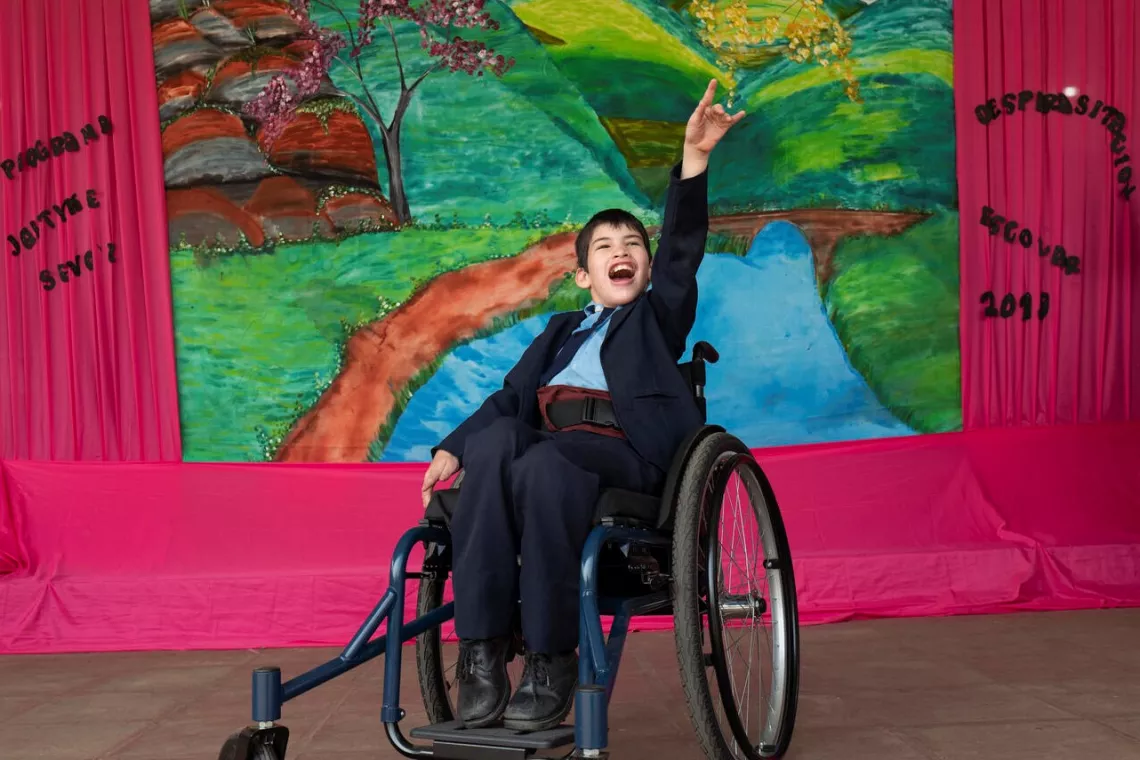At least 1 billion people, or 15 percent of the world’s population, are born or acquired with some kind of disability, of which approximately 240 million are children.
The Convention on the Rights of Persons with Disabilities defines living with a disability as a person who has a long-term physical, mental, intellectual or sensory impairment that, through interaction with the environment, prevents them from participating in society on an equal basis with other people.
Children and young people with disabilities are an incredibly diverse group with a wide range of life experiences. They live in all kinds of communities and have specific disabilities that they were born with or acquired that result in functional challenges in relation to their environment, such as seeing, walking, communicating, caring for themselves and making friends.
However, the extent to which children with disabilities are able to function, participate in society and live fulfilling lives depends on the extent to which they are accepted and embraced. Whatever their background, all children have the right to thrive.
Discrimination against children with disabilities
Yet children with disabilities are among the most marginalized groups in every society.
A variety of barriers limit people’s ability to carry out daily activities, access to social services (such as education and health care), and participation in their community. These include:
Physical barriers – for example, buildings, transport, toilets, playgrounds that are not wheelchair accessible; Communication and information barriers – for example, lack of textbooks in Braille or public health announcements without a sign language interpreter; Attitudinal barriers – for example, stereotypes, low expectations, pity, condescension, harassment, bullying.
All of these are rooted in stigma and discrimination that reflect negative perceptions of disability linked to ableism, a system of beliefs, norms and practices that marginalize disabled people.
Some children with disabilities face other forms of discrimination that exacerbate their poverty. Globally, this is particularly true for girls, those who are poor, black, indigenous, LGBTQI+ children, ethnic minorities, migrant communities and other marginalized groups. Children with severe or multiple disabilities tend to have particular difficulty having their needs met.
Every child, every right
The Convention on the Rights of Persons with Disabilities (CRPD) was adopted in 2006 in response to serious human rights violations experienced by people with disabilities around the world. The CRPD requires governments to take specific measures to ensure that people with disabilities can enjoy full and equal enjoyment of all human rights and fundamental freedoms.
Despite international efforts, children with disabilities remain largely invisible in research and programmes aimed at building more equitable and inclusive societies. This invisibility is both a cause and a consequence of their exclusion.
Children with disabilities often try hard to adapt to an inaccessible world that excludes them. But it is not a problem that needs to be solved or changed. Disabilities are part of the diversity of human experience. Functional limitations manifest themselves in each of us at some point in our life cycle. Whether children with disabilities can lead happy lives depends on our own willingness to confront barriers to change.

